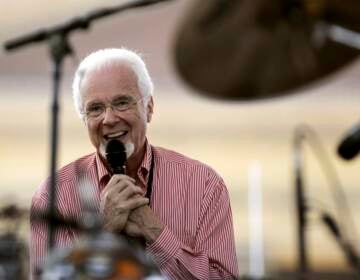EAT Café: Everyone at the Table, Paul Santoleri AKA Pawzant, Karen Singer Tileworks
EAT Café: Everyone at the Table
Producer: Monica Rogozinski
The EAT Café is Philadelphia’s first pay-what-you-can restaurant, established through partnerships between the Center for Hunger-Free Communities of Drexel University’s Dornsife School of Public Health, the Vetri Community Partnership, and Drexel’s Center for Hospitality and Sport Management. The Cafe started as the brainchild of Mariana Chilton, Drexel professor and founder of the Center for Hunger-Free Communities. After witnessing a similar non-profit model several years ago, she decided she wanted to bring the model to Philadelphia as another way to address widespread food insecurity that exists in the city. This past October, the non-profit Café opened its doors in a converted row home on Lancaster Avenue in West Philadelphia. Every customer is served a three-course meal — which includes soup or salad, an entrée and a desert — all at a suggested price of $15. All diners can choose to pay that price, more, less, or nothing at all. The idea is to get everyone at the table, which is where the café gets its name, so that no one is barred from having a normal restaurant experience, no matter their means.
Paul Santoleri AKA Pawzant
Producer: Michael O’Reilly
If you are a French-speaker and try to say Paul Santoleri’s name it often gets run together and shortened to Pawzant. After hearing this many times, Santoleri embraced this name while working in Paris and other parts of Europe. He makes a living as a painter – both here in the US and abroad – and is known for his large, flowing and expansive compositions. If you’ve traveled in Center City, Philadelphia you have seen his work: the multi-sided mural of a cityscape and bike gear silhouette at 2nd and Spring Garden; on the towpath of the Manayunk Canal and the adjacent Fountain Street steps (created with Beth Clevenstine); the “Tower of Babel” mural in the downstairs lobby of WXPN. Many of the large works are private commissions, but Paul got his start painting public murals for the well-known Mural Arts Program. If you are headed to the airport you may have seen one of his first and largest Mural Arts creations – a giant cityscape on the side of an enormous oil tank at 2600 Penrose Ave. FRIDAY ARTS picks up the Pawzant trail there and follows it inside the airport where Paul has been awarded the commission to create a large tile work as part of the Percent for Art Program (PFAP). This city program obligates developers who are building on land acquired and assembled by the Philadelphia Redevelopment Authority to dedicate at least one percent of the total building construction costs toward the commissioning of original, site-specific works of art. The PFAP not only commissions new work like Paul’s interior tile creation, they also do conservation, like taking care of the Billy Penn statue on top of Philadelphia City Hall. We talk with airport and PFAP officials and Pawzant himself to navigate artistic and municipal issues that can seem as complicated and slow-moving as an airport TSA queue itself.
Karen Singer Tileworks
Producer: Karen Smyles
In her Germantown studio, Karen Singer creates just about everything imaginable or that you could ever want, in tile. After earning a Bachelor of Arts degree at Pitzer College in Claremont, CA and a Masters of Fine Arts at the University of Pennsylvania, she set out to be a sculptor, but learned that she wasn’t really a sculptor in the classical sense of the word. She took a tile making class at Community College and fell in love with the medium that was to dominate her work.
Today, you’ll find her in the studio creating the works that cover the walls of everything from hospitals and religious institutions, to schools and theaters. Inspired by, and working with non-profit organizations, she creates murals that are used as motivational tools to encourage donors, and in exchange, donors contributions are acknowledged in an artful way, enjoyed by all.
Friday Arts visits with Karen and studio manager, Sebra Debrecht as they take us through the entire process from the recycling of the clay to the final glazing. Learn how art is being used to inspire a sense of community and to encourage us all to embrace the spirit of giving.
WHYY is your source for fact-based, in-depth journalism and information. As a nonprofit organization, we rely on financial support from readers like you. Please give today.




